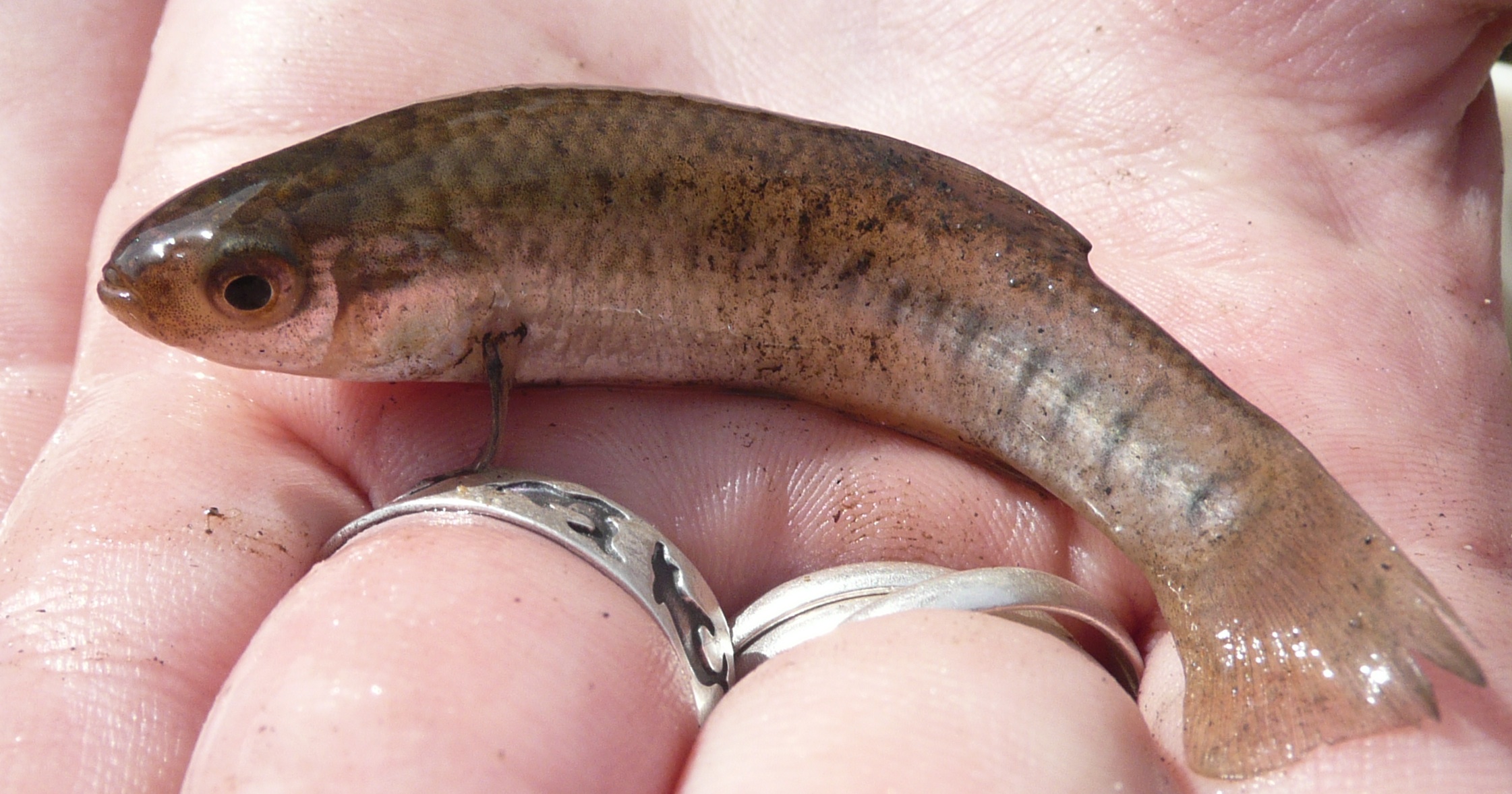The study, published Oct. 26 in the journal Functional Ecology, is the first to document the energetic impacts of parasites on a vertebrate species before the parasites have begun feeding. This research focuses on the California killifish, a small fish found in lagoons and estuaries along the coast of Southern California and Baja California, and its parasite Euhaplorchis californiensis.
These parasites—a kind of flatworm called a trematode—are well-known for infecting the killifish host’s brain. There, they modify its behavior in ways that make it more conspicuous to the parasite’s final hosts, fish-eating birds, with behavior such as hanging out at the water’s surface and flashing the silver coloration on their underside towards the sun.
Because hosts often use behavioral defenses to try to stop parasites that are attacking them (think: scratching or rubbing off parasites when they first land on the skin), the researchers wondered whether killifish might employ such defenses and whether they would cause the fish to burn extra energy.
To find out, a team of scientists at Scripps Oceanography exposed California killifish to infectious stages of the parasite. They found that the fish were more active and burned more energy when confronted by the parasite’s infectious stages, the period before the parasites had begun feeding.
“This study shows us that parasites can disrupt their hosts in a whole range of ways,” said study lead author Lauren Nadler, a former postdoctoral scholar at Scripps and now an assistant professor in the Department of Marine and Environmental Sciences at Nova Southeastern University. “I think we’re only just scratching the surface as to how hosts are impacted by their parasites and at what point they’re impacted by their parasites. It’s not just once the parasite has established an infection in its host—it can be actually much earlier in the process.”
In an ecosystem where the parasite occurs, hundreds to thousands of individual parasites infect nearly every killifish. So, to get uninfected fish for their experiments, the researchers had to collect eggs and sperm from wild fish and raise the fish in the lab. After hatching, some fish were left uninfected or “naive,” and other fish were repeatedly infected by exposure to cercariae, the parasite’s attacking stages, over 13 months. Researchers then measured the metabolic responses of the naive and previously infected fish as they were exposed to new cercariae.
A major finding was that all fish—naive and previously infected—rapidly increased their metabolic rate when they were exposed to cercariae. This indicates that the fish notice the parasites are present and aren’t necessarily “happy” about it, said the researchers.
“We know parasites can change their host’s behavior and suck some energy once they get to the brain,” said Scripps marine ecologist Ryan Hechinger, senior author of the study. “We now have proof that they can also affect host behavior and cause the host to lose energy before they even get inside the host.”
Further indicating the importance of the energy lost to parasites before they fully infect the host, fish that already had parasites on the brain used roughly the same amount of energy for their daily activities as completely parasite-free killifish. This suggests that the main metabolic impacts of this parasite on its host may arise even before the parasite begins feeding.
This study helps to clarify how parasites can contribute to killifish´s “ecology of fear,” the idea that animals´ success in life (such as finding food and reproduction) is limited by the actions that they take to avoid threats in their environment. Typically, only predators are considered, but this study highlights that parasites can also contribute greatly to the ecology of fear.
“The importance of this energy drain is even more clear when you realize that killifish are living in a soup of these attacking parasites every day for much of their lives,” said Hechinger. “How much energy are the parasites causing the fish to burn just in dealing with this threat? How does this impact how much the fish grow and reproduce, how much they eat, how much they get eaten?”
Not all killifish experience the costs of parasite encounters in the same way. The fish that had experienced the parasites before were more bothered by them than the fish that had never encountered them before, said Nadler, “so we think that there was either some sort of learned fear response, or potentially even that they developed a rapid immune response to help to reduce their risk of new infections by this parasite.”
In addition to Nadler and Hechinger, study co-authors include Erik Bengston, Cameron Hassibi, Garfield Kwan, Martín Tresguerres, and Andrew Turner from Scripps Oceanography; Erika Eliason from UC Santa Barbara; Siri Helland-Riise, Ida Johansen, and Øyvind Øverli of the Norwegian University of Life Sciences; and Kelly Weinersmith of Rice University. This study was funded by The Research Council of Norway, project number 250048/F20.


